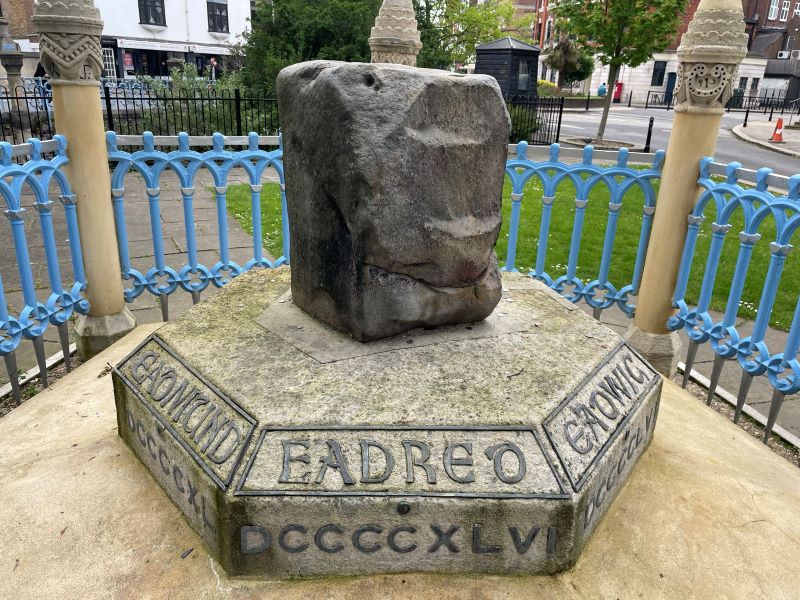If you are looking for a historical day trip from London, why not head to Kingston upon Thames and see the Coronation Stone? This ancient sarsen stone block is believed to have been used for the coronation of seven Anglo-Saxon kings between the 9th and 10th centuries. It is now located next to the Guildhall in Kingston, a town in the Royal Borough of Kingston Upon Thames about half an hour from the heart of London.
Getting There
Location: Kingston upon Thames, England
Transport: Multiple parking garages in town make driving easy. Public transport from London is also very convenient with several bus routes or the South Western Railway taking you directly into Kingston.
The (original) Coronation Stone of England
You’ll often hear about the Stone of Scone, also known as the Stone of Destiny, which was taken from the Scots by King Edward I. Known as the “Hammer of the Scots”, Edward took the Scots’ coronation stone back to England in 1296 as spoils of war. He even had a chair built to hold it for the coronation of English kings, a chair that is still used today for the coronation of the monarch. You can read about that more in my post about Westminster Abbey.
But did you know that wasn’t the first stone used in coronations in England? Before Edward I and his Norman ilk arrived in 1066, the Anglo Saxon kings were using a Coronation Stone of their own. The town name even refers to this important status: “Kingston” is from the Old English “Cyninges tun”, meaning the “King’s manor”.
Who used the Coronation Stone?
The Coronation Stone is about the size of a large piece of luggage, and there’s a lot of history to unpack here. Because written records from this period are so scarce, it’s hard to know for certain how the stone was used. According to tradition, the following kings were crowned on this stone:
- Edward the Elder (899-924)
- Athelstan (924-939)
- Edmund I (939-946)
- Edred (946-955)
- Edwy (955-959)
- Edward the Martyr (975-978)
- Ethelred the Unready (978-1016)
These kings ruled over Wessex, one of the kingdoms of Anglo-Saxon England, and some of them also claimed the title of King of England. They faced many challenges from Viking invasions, internal rebellions and dynastic disputes. Their coronations on this stone symbolized their authority and legitimacy as rulers.
The stone was originally located near the river Thames, where a wooden church stood. The church was later replaced by a stone one, which became All Saints Church that you can still visit today. The stone was moved several times over the centuries, until it was placed in its current location in 1935. It is now surrounded by iron railings and has a plaque with the names of the kings.
All Saint's Church
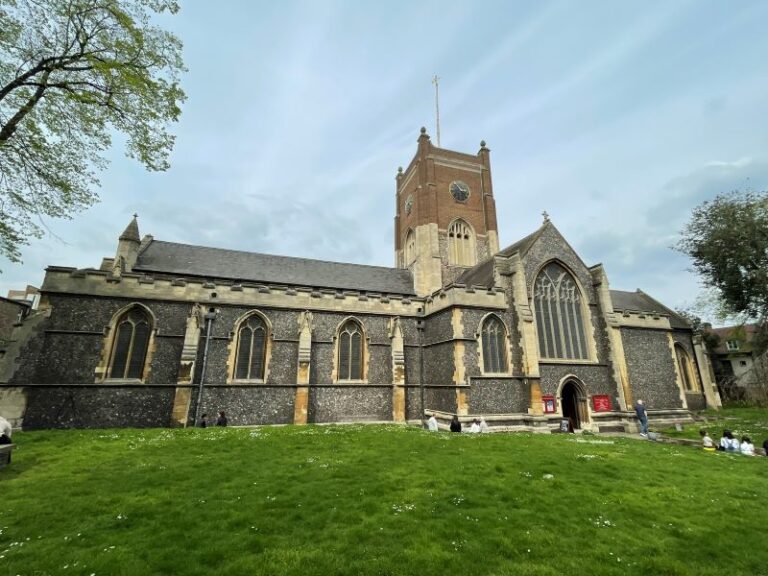
All Saints Church is in the heart of Kingston, a short walk from the Coronation Stone through the town’s Market Square. This is the historic parish church of Kingston and is reportedly where the Kings noted on the Coronation Stone were crowned.
The original Anglo-Saxon church would have been made of wood but, like so many pre-Conquest churches, was rebuilt in stone during the Norman period. The oldest part of the church is the Chancel, which dates from the 14th century. Here you can see the high altar, the choir stalls and the organ as well as some amazing stained glass and intricately carved woodwork.
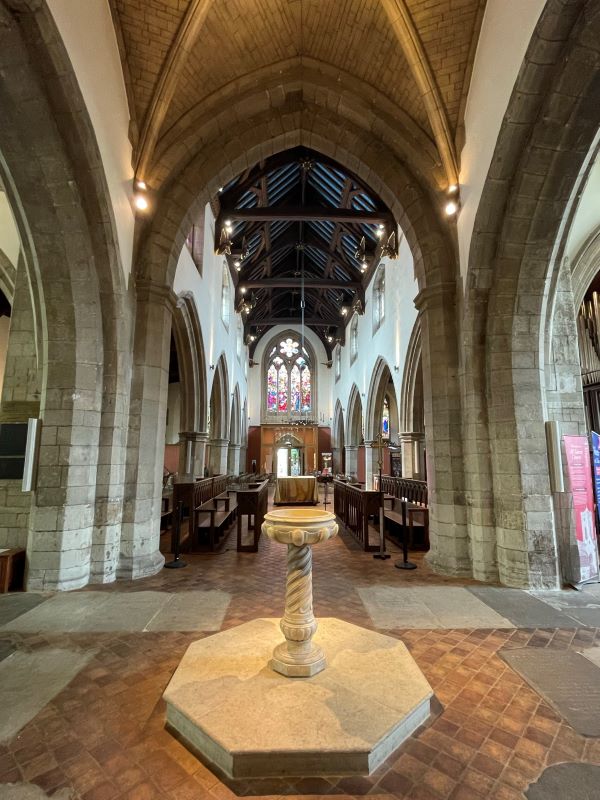
One area inside not to miss is the base of the column where you can see the remains of medieval tiles still in place. They are below the level of the floor you stand on today, but the colors and patterns are still bright and vivid.
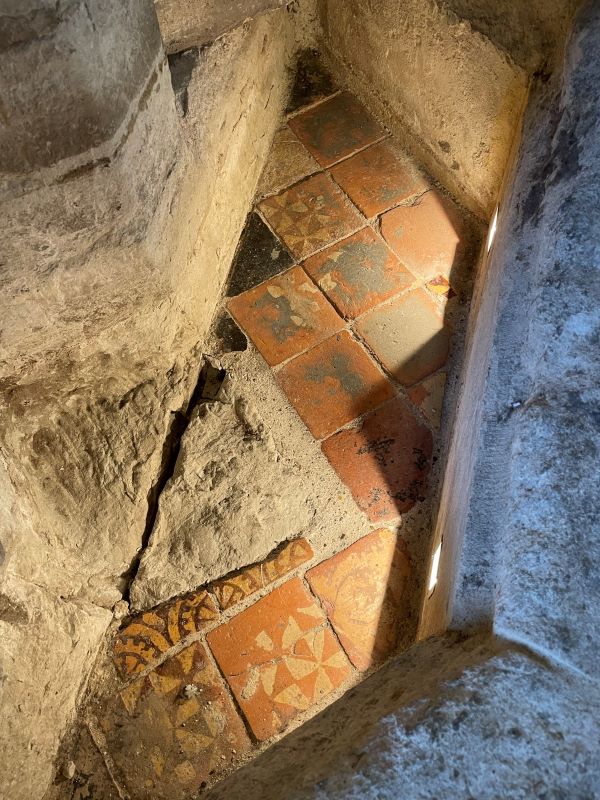
Clattern Bridge - the oldest intact bridge in England
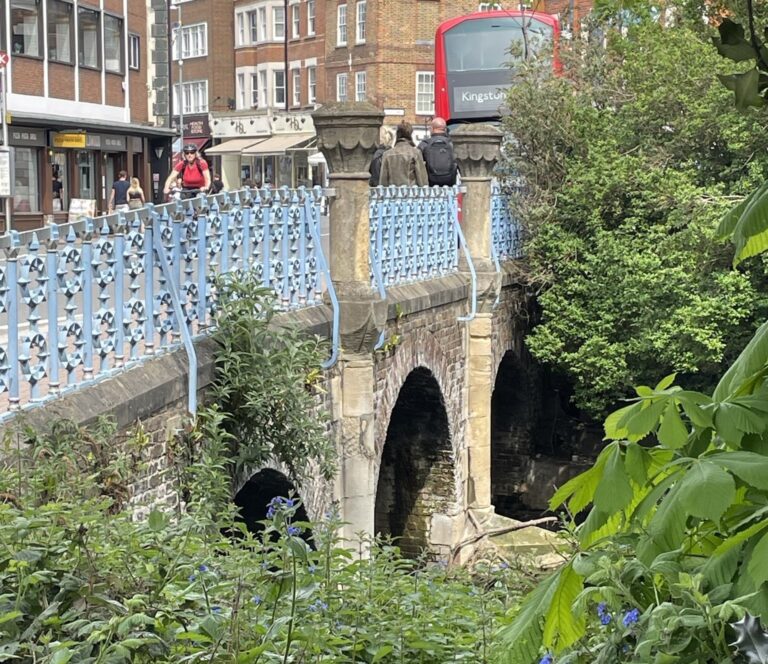
Between the Church and the Coronation Stone, you’ll want to cross the Clattern Bridge. Built around 1175, it replaced a Saxon bridge known as “Clatrung Bridge”. The name is a reference to the sound of horse hooves tromping over it. The bridge was part of the main road from London to Portsmouth, a busy route in its day. In 1215 King John crossed the bridge on his way to Runnymede to sign the Magna Carta!
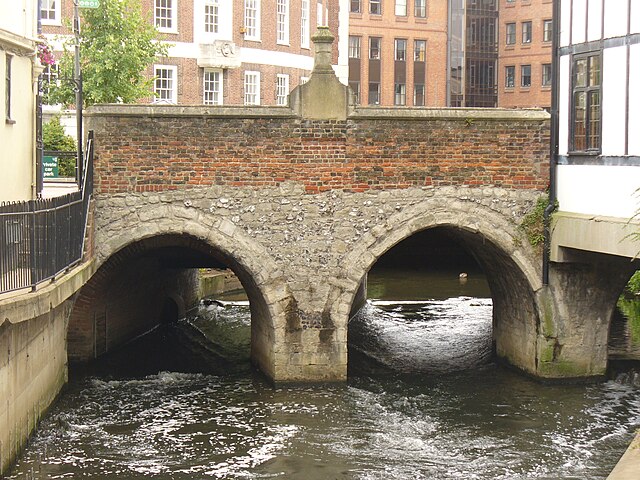
The Hogsmill River flows underneath on its way to the Thames and you can walk or drive across it, as it is still an active bridge today.
The bridge was only 8 feet wide through to the Victorian era, when it was finally widened to allow for more traffic. The downstream side (opposite the Coronation Stone) still utilizes the original stone and archways.

While you’re in town, check out the great restaurants and riverwalk along the Thames as well as the shopping district and lively Market Place. It’s a stone’s throw from Hampton Court Palace, so if you have time that’s an incredible place to visit too!
Inspired to visit Kingston upon Thames? Let me know what you think!

